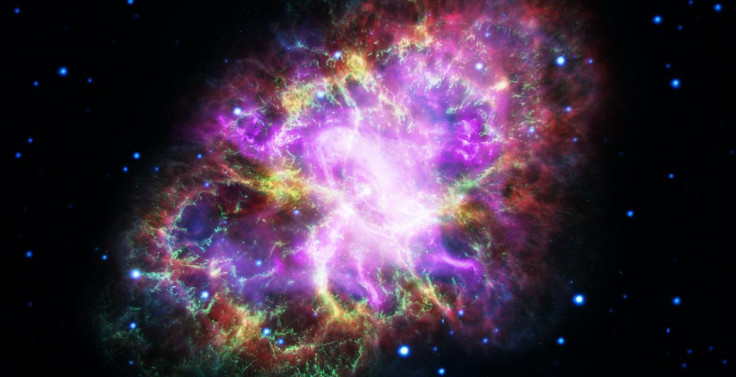Crab Nebula: 5 telescopes combine to create mesmerising and detailed image of supernova
The Crab Nebula is located in the Taurus constellation.

A new dramatic and highly-detailed image of the Crab Nebula has been created by astronomers by combining data from five telescopes, including the famous Hubble telescope. The Crab Nebula is a supernova remnant located in the constellation of Taurus.
Data from The Very Large Array, the Spitzer Space Telescope, the Hubble Space Telescope, the XMM-Newton, and the Chandra X-ray Observatory was used to create the image. While some recorded the visible light view, others deciphered infrared. The Chandra observatory captured the X-ray glow of the nebula.
The image may look like a splash of various colours, but the feat took five long years to achieve.
"Comparing these new images, made at different wavelengths, is providing us with a wealth of new detail about the Crab Nebula. Though the Crab has been studied extensively for years, we still have much to learn about it," said Gloria Dubner who led the team of scientist working on this image.
The Crab Nebula is one of the oldest known galactic wonders and its discovery dates back to 1054, when Chinese astronomers noticed its explosion had caused a "guest star" in the sky. The supernova, which lies approximately 6,500 light-years from Earth, has been analysed several times over centuries and astronomers have been able to decipher vital information about it.
The supernova has a superdense neutron star, also known as a pulsar, at its centre, which is rotating every 33 milliseconds and shooting out rotating beams of radio waves and light.
Their study is published in the Astrophysical Journal.
© Copyright IBTimes 2025. All rights reserved.





















